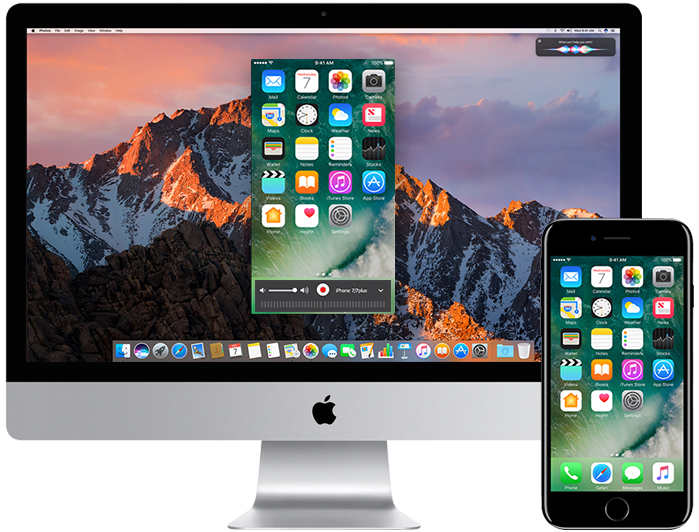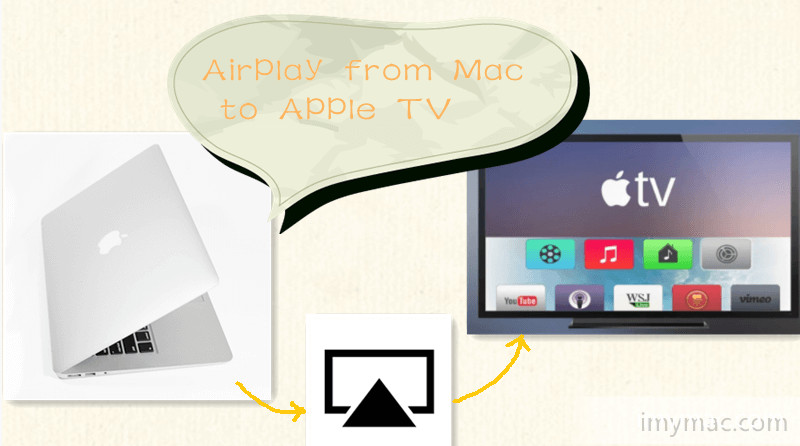AirPlay enables you to stream content from your compatible device to an AirPlay receiver. If you have a Mac, this guide focuses on how to AirPlay from a Mac to an AirPlay receiver available on your network. Read on to learn more.
Mirror a Mac screen on Apple TV: On the Mac, click in the Mac menu bar, then choose the name of the Apple TV you want to use. To end screen mirroring, click in the menu bar, then choose Turn Airplay Off. Stream audio from a Mac to Apple TV: Option-click the Sound icon in the Mac menu bar, then select Apple TV in the Output Device list. AirPlay lets you do it all. AirPlay lets you share videos, photos, music and more from Apple devices to your Apple TV, favourite speakers and popular smart TVs. And what you share always stays personal and private. So sit back and enjoy everything you love — in more places than ever. Watch Servant on the Apple TV app.
AirPlay articles on MacRumors.com. Quibi has added AirPlay support, allowing iPhone users to stream content from the short-form mobile video service to Apple TV and AirPlay-compatible smart TVs. Make sure that your devices are on and nearby. Check that your AirPlay-compatible devices are on. AirPlay is Apple's proprietary system that allows you to stream audio or video from an Apple source - iOS, HomePod or Mac computer - to another device over a home network. Now, AirPlay 2 expands.
Screen Mirroring & AirPlay Tips

Screen Mirroring Tips & Apps
iPhone/Android Mirroring
Airplay Tips
AirPlay is one of the really useful features offered by Apple. It allows Apple users to mirror content from one device to another – all without needing any cables at all. The technology works over a wireless network and lets you mirror one device’s screen to another as long as they are both compatible.
In the following guide, you are going to learn more about this wonderful feature offered by Apple, how to enable and disable the feature on your Mac, and how to actually use it on your Mac. At the end, you will also learn to fix some of the common issues you could encounter while using the feature on your devices.
What is AirPlay and How to Turn on/off AirPlay on Mac
First of all, let us learn exactly what AirPlay is and how it works.
AirPlay is a feature embedded on your Apple devices including Mac and iOS devices that lets you mirror your device’s screen to another device. For example, you can mirror the screen of your iPhone to a compatible Apple TV, and so on.
This gives you a chance to view the contents of your iPhone or iPad on a large screen of your Mac or Apple TV. Since all the Apple devices come enabled with the option, there really is not anything you need to buy or download on your devices.
Enable and Disable AirPlay on Mac
Turning AirPlay on and off on Apple devices is pretty easy and it can be enabled as the following on your Mac.
Step 1. Click on the Apple logo at the top-left corner of your screen and select System Preferences.
Step 2. On the following screen, click on the option that says Displays. That is where the option we are looking for is located.
Step 3. Turn the AirPlay Display option to the ON position.
Enable the AirPlay feature on Mac
The feature should now be enabled and you will see its icon in the menu bar of your Mac. Clicking on the icon will let you see all available AirPlay receivers.
To turn the feature off, simply head into the same settings panel and disable the AirPlay Display option. You will be all set.
:max_bytes(150000):strip_icc()/001-apple-airplay-mirroring-explained-2000228-cc422795c9314a4aad12ba2e02fc92fa.jpg)
How to AirPlay from Mac to Apple TV
Now that you know how AirPlay works and how to enable it, let us check out how to use AirPlay on a Mac with an Apple TV.
All Apple TVs come equipped with the AirPlay feature and you can mirror your Mac’s screen to any of those TVs as long as the minimum requirements meet. In order to mirror screen from your Mac, both your Mac and your Apple TV should be connected to the same WiFi network.
Once that is done, follow the following steps on how to AirPlay from Mac to Apple TV to do the actual task of screen mirroring.
Step 1. Click on the AirPlay icon in the menu bar of your Mac to open the feature options.
Step 2. You will see a list of available AirPlay receivers. Click on your Apple TV in the list and your Mac will connect to it.
Soon as a connection has been established, you will be able to see the screen of your Mac on your Apple TV. This is usually instant in most cases and you have successfully made an AirPlay connection between your compatible devices.
How to AirPlay from Mac to Samsung TV
Not everyone owns an Apple TV and there are Samsung and other TV users as well who would like to use the AirPlay features on their TVs. If you are one of them, this section will help you out.
In order to do screen mirroring from Mac to the Samsung TV, you need to install an app on your Mac. It is because the Samsung TVs are not compatible with Apple’s AirPlay feature and so you need to use a third-party app to bridge the compatibility gap.
The following shows what you need and how to perform the procedure on your Mac machine:
Step 1. Download and install the ‘Mirror for Samsung TV’ app on your Mac machine.
Step 2. Ensure that both your TV and your Mac are on the same WiFi network. Launch the app on your Mac and let it scan the available receivers.
Download Apple Airplay For Mac
Step 3. Click on your Samsung TV in the list and the app will start mirroring your Mac to your TV.
AirPlay from a Mac to Samsung TV
The app also gives you the option to transfer audio from your Mac to your TV if you would like to do it.
How to Fix AirPlay Not Showing up on Mac
There may be times when you will not see the AirPlay icon in the menu bar of your Mac. This makes users wonder as to where the feature is gone.
Fortunately, there are a few fixes to apply to get the option back in your menu bar.
Fix 1. Turn On AirPlay
Make sure the AirPlay receivers on your network are turned on and that specifically the AirPlay option is also enabled.
If your Mac does not find any AirPlay receivers on the network, it removes the AirPlay icon from the menu bar.
Fix 2. Enable the AirPlay Option
If you have not already enabled the AirPlay option on your Mac, you will not see the icon in your menu bar.
Head into System Preferences followed by Displays. Ensure the AirPlay option is turned on.
Fix 3. Reboot Your Devices
Reboot all of the devices you are trying to connect and it should likely fix the issue for you.
These are some of the things you can do when AirPlay does not show up on Mac.
The Bottom Line
If you have a Mac and you wish to use the AirPlay feature, the above should teach you how to AirPlay from a Mac machine. There are various ways to use the feature and you can go for the one that is convenient for you.
More Related Articles
Product-related questions? Contact Our Support Team to Get Quick Solution >
Make sure that your devices are on and nearby
Check that your AirPlay-compatible devices are on. If your Apple TV is in Sleep mode and uses Ethernet, wake your Apple TV with the remote.
Airplay For Apple Macbook Air
Make sure that your AirPlay-compatible device is near the device that you're trying to stream from. If you can't connect to an AirPlay device, try moving closer to it and try again.
To stream audio to multiple speakers with AirPlay 2, make sure that your speakers are compatible with AirPlay 2.
Check for updates
Make sure that all of your devices are compatible with AirPlay and updated to the latest software version. Learn how to check for updates on:
- HomePod*
- Smart TVs
Connect your devices to the same Wi-Fi network
- iPhone, iPad, or iPod touch: Go to Settings > Wi-Fi. Also, make sure that Bluetooth is turned on.
- Apple TV: Go to Settings > Network. If your Apple TV uses Ethernet, check that the cable is plugged into the router that you use for Wi-Fi.
- Mac: Click in the menu bar.
- HomePod:* HomePod uses the same Wi-Fi network as the iOS device it was set up with. If your iOS device is in range of HomePod and connected to a different Wi-Fi network, HomePod will show an alert in the Home app that says 'Wi-Fi Network.” To connect HomePod to the same Wi-Fi network as your iOS device, open the Home app, press and hold HomePod, tap Settings, then tap 'Move HomePod to [Wi-Fi network]' at the top of the screen.
- Third-party AirPlay-compatible speakers and Smart TVs: Go to the manufacturer’s website to learn how to connect them to your Wi-Fi network.
Check your AirPlay settings

About Apple Mac
If you can’t AirPlay to an Apple TV or HomePod,* check the AirPlay settings for that device.
- On Apple TV, you might have restricted who can AirPlay.
- On HomePod,* you might have restricted speaker access.
- For AirPlay 2, you might need to invite others to control your home so they can AirPlay to your devices.

If you're using a Mac or PC, you can't AirPlay to HomePod* if you select Only People Sharing This Home.
Still need help?
If you have another issue using AirPlay, learn what to do.
If your music unexpectedly stops
If your music stops playing unexpectedly, use your device or Siri to start playing music again. In some situations, the Home app might be using your HomePod,* Apple TV, or AirPlay-compatible speaker as the main audio source for streaming music (even if your HomePod* or Apple TV isn’t currently playing music). Using Siri on that device or performing another task might cause playback to stop everywhere. You can also use an iOS device or computer with iTunes as an audio source to manually stream music instead.
If you see video but don't hear audio
If you don't hear audio when streaming video from your iOS device or Mac to your Apple TV, make sure that the volume is turned up and not muted on both your iOS device and your television or receiver.
If you're streaming video from an iPhone or iPad, check the Ring/Silent switch. If it's set to silent, you'll see an orange line. Toggle the switch to turn on the ringer.
If your content gets interrupted or your network lags
If you have a weak Wi-Fi signal or interference from a nearby device, like a microwave or baby monitor, try the following:
Apple Airplay Apple Tv
- Make sure that you use the recommended settings for your Wi-Fi router.
- Move or turn off other devices that might cause interference.
- If you're trying to AirPlay to Apple TV, try connecting your Apple TV directly to your router with an Ethernet cable instead of using Wi-Fi.
Your AirPlay connection might get interrupted when you lock your device, put it to sleep, or switch to a different app.
If you still can’t use AirPlay after trying these steps, contact Apple Support.
*HomePod isn't available in all countries and regions.
